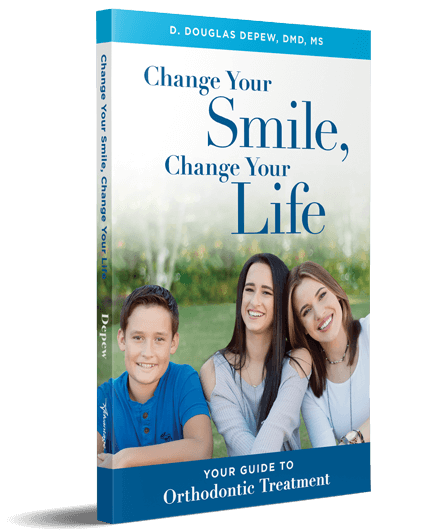“When are my braces coming off?”
This question is a familiar one to any orthodontist. What patients want most is a beautiful smile, but they also want treatment to be as short as possible.
Why You Can’t Rush Braces
At our practice, all of our protocols and procedures are designed so that our patients don’t have to undergo treatment any longer than necessary. This has translated to current treatment times being six to eight months shorter than similar cases in the past.
Still, it takes time. To patients, it may feel like braces (and other orthodontic appliances) take a long time to work. But you have to remember that they have a big job to accomplish! Teeth are strong and are rooted in the bones of the mouth. Moving them takes force over time. Rushing the process can lead to problems such as root shortening or “hyalinization,” when the bone begins resisting movement.
For this process to be done right, it has to be done with precision and with an understanding of how the teeth and bone change during treatment. It can be sped up, but it can’t be rushed.
New Options to Speed Up Treatment Time
Fortunately, with the right tools and techniques, it is possible for many patients to shorten their treatment time by taking advantage of something called Regional Acceleratory Phenomenon (RAP) Effect. This works by manipulating the biology of tooth movement. When a bone is damaged, the body produces molecules called Cytokines that signal nearby cells to get to work. They tell Osteoblasts (bone-producing cells) and Osteoclasts (bone-dissolving cells) to start repairing and remodeling the affected area. By stimulating the release of cytokines through light, vibration, chemical injections, or minor surgery that cause controlled, deliberate trauma, we can speed up this process. Here are three methods that can be used to accelerate treatment time while maintaining excellent outcomes for patients:
Micro-Osteoperforations (MOPS)
RAP treatment in orthodontics is often accomplished with a minor surgical procedure done under local anesthetic in which small dimples are made in the surface of your bone between the roots of the teeth. It is done with a hand-held instrument placed through the gums and has been shown to be very effective at moving teeth more quickly.
Accelerated Osteogenic Orthodontics (AOO)
AOO is also very effective at reducing treatment time but is more invasive than RAP. A periodontist or oral surgeon performs this treatment, rather than an orthodontist, because it requires working directly on the bone that supports the teeth. It works by removing a small amount of the bone and making the bone softer temporarily, which allows for faster movement of teeth. (Although some bone matter is removed during the procedure, the bone remineralizes in the following months and ends up being just as strong as before.) Though very effective, this treatment is typically reserved for extreme and specific cases.
Noninvasive Methods
The previous two methods are effective but may be more invasive than some patients want. Luckily, there are new technologies on the market that also get good results without being invasive. The AcceleDent and the VPro5 are two examples. These are small handheld devices that the patient bites on for a period of time every day. They work by emitting small vibrations that induce microtrauma to stimulate a cytokine response, similar to RAP. Whether they shorten treatment time is still unknown, as they’re relatively new, but they show promise and they do have the added benefit of reducing pain after orthodontic appointments.
Shortening Treatment Time the Old-Fashioned Way
Even if you’re not interested in the methods described above or aren’t a good candidate for them, you can still keep treatment time on track by doing your part as a responsible patient. You’ll get better, faster results if you do what you’re supposed to do: brush and floss regularly, avoid foods that can harm your braces, go to all of your appointments, and use rubber bands or additional appliances as directed by your orthodontist.
On the other hand, if you are interested in techniques and tools such as the ones discussed here, talk to your orthodontist about your options. You may be surprised at what’s available and how soon you could see that smile you’ve been dreaming of.

